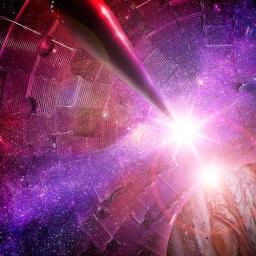
The conditions deep inside large planets, such as Jupiter, Uranus and other planets recently discovered outside our solar system, have been
experimentally recreated. This allows researchers to re-create and accurately measure material properties that control how these planets evolve over time (information that is essential for understanding how these massive objects form).
Using the largest laser in the world, the National Ignition Facility at Lawrence Livermore National Laboratory, teams from the Laboratory, University of California, Berkeley and Princeton University squeezed samples to 50 million times Earth's atmospheric pressure, which is comparable to the pressures at the center of Jupiter and Saturn. Of the 192 lasers at NIF, the team used 176 with exquisitely shaped energy versus time to produce a pressure wave that compressed the material for a short period of time. The sample -- diamond -- is vaporized in less than 10 billionths of a second.
Though diamond is the least compressible material known, the researchers were able to compress it to an unprecedented density greater than lead at ambient conditions.
"The experimental techniques developed here provide a new capability to experimentally reproduce pressure-temperature conditions deep in planetary interiors," said Ray Smith, LLNL physicist and lead author of the paper. Such pressures have been reached before, but only with shock waves that also create high temperatures -- hundreds of thousands of degrees or more -- that are not realistic for planetary interiors. The technical challenge was keeping temperatures low enough to be relevant to planets. The problem is similar to moving a plow slowly enough to push sand forward without building it up in height. This was accomplished by carefully tuning the rate at which the laser intensity changes with time.
"This new ability to explore matter at atomic scale pressures, where extrapolations of earlier shock and static data become unreliable, provides new constraints for dense matter theories and planet evolution models," said Rip Collins, another Lawrence Livermore physicist on the team.
Abstract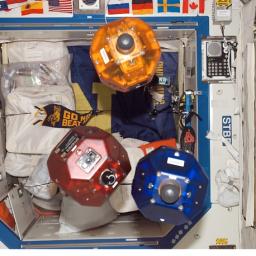
Since 2006, three bowling ball-size free-flying Synchronized Position Hold, Engage, Reorient, Experimental Satellites (SPHERES) have been floating around the International Space Station. Now, they are
attaching a smartphone to the spheres, making them "Smart SPHERES", a more "intelligent" free-flying robot with built-in cameras to take pictures and video, sensors to help conduct inspections, powerful computing units to make calculations and Wi-Fi connections to transfer data in real time to the computers aboard the space station and at mission control in Houston.
In a two-phase experiment, astronauts will manually use the smartphones to collect visual data using the integrated custom 3-D sensor to generate a full 3-D model of their environment. After the map and its coordinate system are developed, a second activity will involve the smartphones attached to the SPHERES, becoming the free-flying Smart SPHERES. As the free-flying robots move around the space station from waypoint to waypoint, utilizing the 3-D map, they will provide situational awareness to crewmembers inside the station and flight controllers in mission control. These experiments allow NASA to test vision-based navigation in a very small mobile product.
"NASA uses robots for research and mission operations; just think about the rovers on Mars or the robotic arm on the ISS or space shuttle," said Chris Provencher, manager of the Smart SPHERES project. "Inside the ISS space is limited, so it's really exciting to see technology has advanced enough for us to demonstrate the use of small, mobile robots to enhance future exploration missions."
Ultimately it is the hope of researchers that these devices will perform housekeeping-type tasks, such as video surveys for safety and configuration audits, noise level measurements, air flow measurements, and air quality measurements, that will offset work the astronauts currently perform.
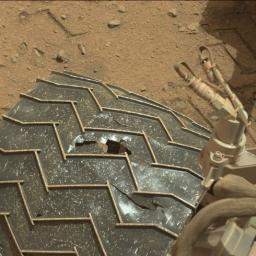
The Mars Curiosity rover
has sustained serious damage to its wheels. Photos reveal the damage was more extensive than expected, which may cause NASA to reconsider the route to Curiosity's primary goal, Mount Sharp. Nonetheless, scientists are confident the mission can still be completed, but the mission may need revamping. It has meant taking a much closer look at the proposed route to Mount Sharp, and driving backwards to prevent the front wheels from failing.
Curiosity is now
traversing a section of ground en route to its goal that is particularly dangerous as it is the same type of surface that has caused the majority of the wheel damage. Cross your fingers for Curiosity and pay close attention: it's going to be a wild ride!
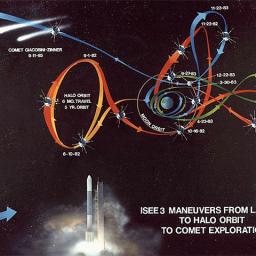 A group of scientists and enthusiasts are undertaking one of the most ambitious and interdisciplinary crowdfunded projects ever attempted
A group of scientists and enthusiasts are undertaking one of the most ambitious and interdisciplinary crowdfunded projects ever attempted:
They want to resurrect a long-dead satellite and send it on a close-range flyby of the Moon. The public has taken an inordinate interest in this resurrection plan, funding its RocketHub project to the tune of $160,000 - but the dream is quickly evaporating. The International Sun/Earth Explorer-3 (ISEE-3), which finished its original mission more than 30 years ago, has just days left in which to troubleshoot the satellite's many remaining problems. At this point the question is not whether the team can do everything they'd hoped, but how much of the original dream they can salvage.
This is interesting at every level. The satellite itself is interesting, this project is too, but the level of interest and effort that has gone into the
RocketHub project is really amazing. Good luck, team!
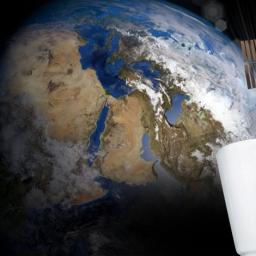
Thank God for researchers.
From Lavazza, the folks who make that spectacular espresso coffee :
"An espresso coffee is what I miss most aboard the International Space Station." We have repeatedly heard this comment from the Italian astronauts who for 13 years have been at times working in the International Space Station, and today their espresso wish is about to become reality. In fact, Argotec and Lavazza are working together with the Italian Space Agency (ISA) to actually bring the authentic Italian espresso onto the International Space Station. ... Its name is ISSpresso. It takes its name from the International Space Station (ISS), where it is to be installed. It is the first capsule-based espresso system able to work in the extreme conditions of space, where the principles that regulate the fluid dynamics of liquids and mixtures are very different from those typical on Earth.
This, my friends, is scientific progress.

The New Yorker has an
interview of
Douglas Vakoch , author of
Archaeology, Anthropology, and Interstellar Communication , a new book about the complexities of communicating with extraterrestrials, released last month by NASA.
From the New Yorker article: "For a long time, the people most interested in searching for extraterrestrial intelligence came from "hard science" disciplines like astronomy or physics; to them, the main obstacles seemed technical (building radio telescopes, processing signal data). But, in recent years, the field has broadened to include people who already study other civilizations here on Earth. In these essays, they report that their jobs are hard enough as it is. Archaeologists struggled to decipher ancient Greek; deciphering a transmission from another world will be even more difficult. Even if we do manage to detect a signal, they write, fully understanding what it means may be impossible."
You can submit your own recommendation for outbound communications to ET on the
Earth Speaks website, and browse what others have submitted.

Really cool news about a recent
acquisition by Google . Skybox provides high-resolution photography from space and its imagery -- if made widely accessible -- could facilitate many new spatial-analytic studies going forward as daily time steps appear feasible with the Skybox satellite network.
From
the company website is this advertisement for their startup origins: "2009, Founders wrote the first Skybox business plan as part of a Stanford graduate entrepreneurship course, Spent 6 months working out of John's living room, Secured Series A financing of $3M from Khosla Ventures, Moved into a windowless 3,000 sqft office in Palo Alto, Began to attract, court, and hire the smartest people they knew to join the vision..."

The European Space Agency's
Venus Express probe is set to perform a series of
aerobraking manoeuvres over the next few weeks in the upper atmosphere of our twin planet. The spacecraft has been collecting data on the Venusian atmosphere in a polar orbit around Venus since 2006, but is scheduled to run out of fuel later this year. The aerobraking will plunge the craft deeper into the atmosphere and hopefully get some last minute data before its end of life.
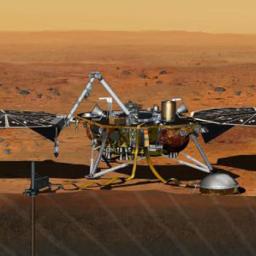
Cool news from NASA:
All systems are go for construction of a new Mars lander .
NASA and its international partners now have the go-ahead to begin construction on a new Mars lander, after it completed a successful Mission Critical Design Review on Friday. NASA's Interior Exploration Using Seismic Investigations, Geodesy and Heat Transport (InSight) mission will pierce beneath the Martian surface to study its interior. The mission will investigate how Earth-like planets formed and developed their layered inner structure of core, mantle and crust, and will collect information about those interior zones using instruments never before used on Mars.
I'm happy to have some good news related to space exploration, since the US-Russia space cooperation relationship
is such a mess .
Not every eclipse consists of one celestial object blocking the light of another. There's an interesting article over at Scientific American about a recently discovered phenomenon where a smaller-but-dense star passes in front of its binary partner, and its stronger gravity actually
creates a lens that bends gravity and makes the light of the "behind" star brighter, rather than occulting it. We live in an amazing universe, and we barely understand any of it. Like other eclipses, better not look at this one with the naked eye or you will probably melt your brain.
 The conditions deep inside large planets, such as Jupiter, Uranus and other planets recently discovered outside our solar system, have been experimentally recreated. This allows researchers to re-create and accurately measure material properties that control how these planets evolve over time (information that is essential for understanding how these massive objects form).
The conditions deep inside large planets, such as Jupiter, Uranus and other planets recently discovered outside our solar system, have been experimentally recreated. This allows researchers to re-create and accurately measure material properties that control how these planets evolve over time (information that is essential for understanding how these massive objects form).






